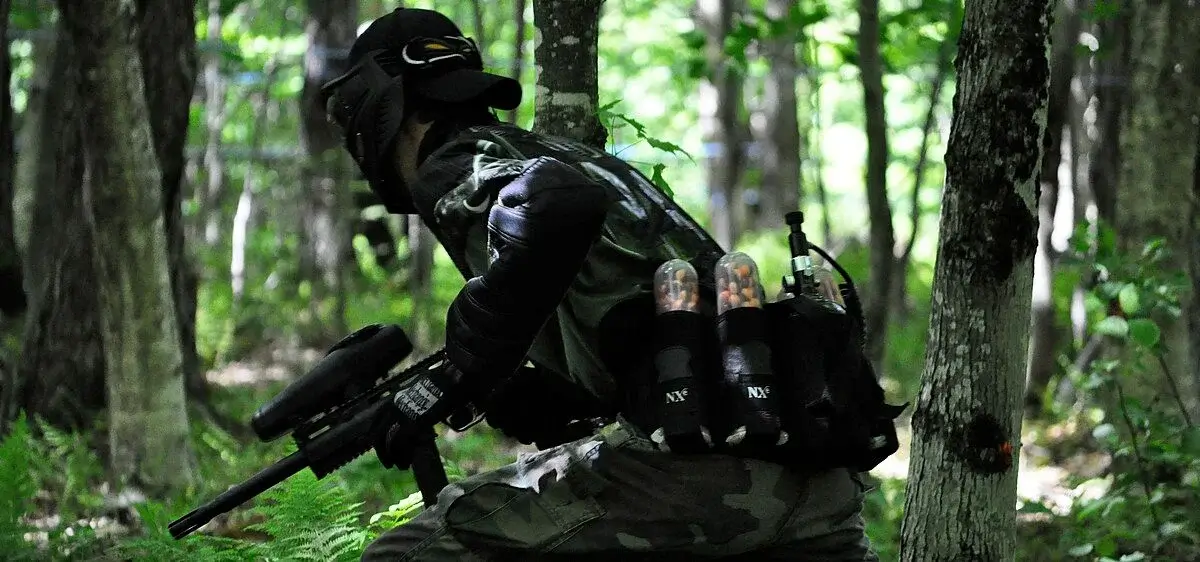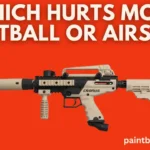Delving into the world of paintball, one might wonder about the duration of a typical game. Paintball games vary widely in length due to many factors, including the fire rate, the playing area’s size, and individual playing styles.
This article explores these variables and offers insights into the economics of the sport, equipment management, and the social dynamics that shape the paintball experience.
Whether you’re a seasoned player or new to the sport, understanding these aspects can help you plan and maximize your paintball adventures.
- Key Takeaways
- Rate of Fire and Ammunition Management
- Playing Area Size and Game Dynamics
- Player Style and Tactical Approach
- Comparing Cheap vs. Expensive Paintballs
- Strategies for Reducing Paintball Expenses
- Understanding Paintball Pricing Structures
- Effective Storage and Maintenance of Equipment
- Choosing the Right Upgrades and Accessories
- Selecting the Best Mask for Comfort and Protection
- Building Team Chemistry Through Paintball
- Navigating the Challenges of Indoor vs. Outdoor Venues
- Dealing with Disappointments and Negative Experiences
- Estimating Game Length and Required Ammunition
- Scheduling and Booking Your Paintball Session
- Preparing for Different Game Scenarios and Objectives
Key Takeaways
- A paintball game’s duration is influenced by factors such as rate of fire, ammunition management, playing area size, and player tactics, with 100 paintballs lasting anywhere from 2 to 10 minutes for new players.
- Paintball costs can range from $40 to $85 for a case of 2000, with options to manage expenses through bulk purchases, pre-owned equipment, and selecting budget-friendly venues.
- Proper storage and maintenance of paintball equipment, along with choosing the right upgrades and masks, are essential for an enhanced and safe playing experience.
- Paintball offers a unique social and competitive platform, fostering team chemistry and presenting challenges that vary between indoor and outdoor venues.
- Planning a paintball session involves estimating game length and required ammunition, scheduling, and preparing for different game scenarios to ensure a fulfilling experience.
Factors Influencing the Duration of a Paintball Game

Rate of Fire and Ammunition Management
The pace of a paintball game can be significantly affected by the rate of fire and how players manage their ammunition. A higher rate of fire can lead to a quicker depletion of paintballs, necessitating more frequent reloads or even a premature end to a player’s participation if they run out. Conversely, a more conservative approach can prolong the game and increase the strategic element.
Rules and regulations often dictate the rate of fire to ensure safety and fairness. For example:
- Semi-automatic cap: 10 balls per second
- Response triggers cap: 7 balls per second
- Maximum velocity: 280 feet per second
Adhering to these limits not only aligns with the rules but also encourages players to be more mindful of their shooting habits.
Ammunition management is crucial, as running out of paintballs can leave a player defenseless. It’s important to balance aggression with conservation and to be aware of the cost implications of firing rates. Paintballs can be expensive, and inefficient use can lead to higher expenses.
Playing Area Size and Game Dynamics
The size of the playing area is a critical factor in determining the duration of a paintball game. Larger fields require more time for players to navigate and engage with opponents, often leading to extended match times. Conversely, smaller arenas can result in quicker, more intense skirmishes. Game dynamics, such as the objectives and rules, also play a significant role. Capture the flag games may last longer due to the strategic nature of the gameplay, while elimination matches might conclude rapidly as players are steadily knocked out.
The interplay between the playing area size and game dynamics creates a unique tempo for each match, influencing how players move, strategize, and ultimately, how long the game lasts.
Understanding the relationship between these elements is essential for players looking to estimate game length and prepare accordingly. Below is a list of common game dynamics and how they might affect match duration:
- Elimination: Quick-paced, often shorter games.
- Capture the Flag: Strategic, potentially longer games.
- King of the Hill: Can vary, depending on player tenacity and team strategy.
- Scenario Play: Duration is highly variable, influenced by story and objectives.
Player Style and Tactical Approach
The players’ styles and tactical approaches can significantly affect the duration of a paintball game. Aggressive players may push for a swift conclusion, while more strategic players might prolong the game, using the terrain and stealth to their advantage.
- Aggressive style: Quick engagements, higher ammo usage
- Strategic style: Longer games, cautious ammo consumption
- Mixed style: Variable game length, adaptive tactics
The key to a successful paintball game lies not just in the ability to shoot accurately, but also in understanding when to engage and when to hold back. This balance can dictate the pace and length of the game.
Understanding your style and that of your opponents is crucial. For instance, a team that communicates effectively and moves with purpose can control the game’s tempo, often leading to a more predictable duration. Conversely, a team lacking coordination may find themselves in prolonged skirmishes, leading to an extended game time.
The Economics of Paintball: Cost Considerations
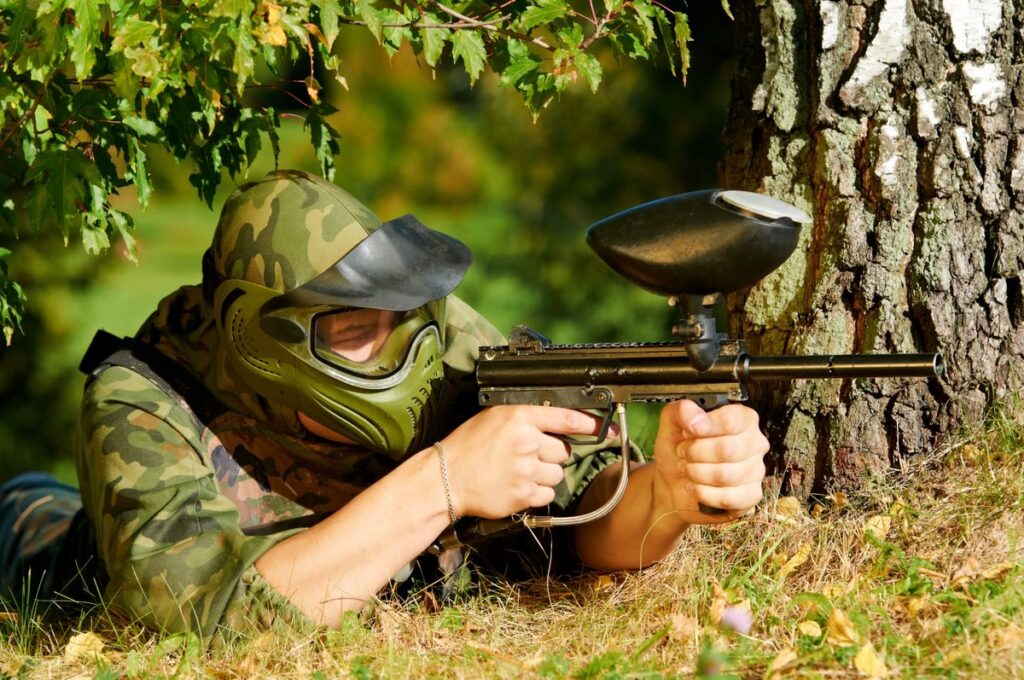
Comparing Cheap vs. Expensive Paintballs
When it comes to paintball, the cost of ammunition can significantly impact your overall expenses. Cheap paintballs typically start at around USD 40 for a case of 2000, whereas tournament-level paintballs can cost up to $85 for the same quantity. But what exactly differentiates the two?
The primary distinction lies in the quality of the shell and the fill. Expensive paintballs are generally more consistent in shape, have a thicker fill that is less likely to wipe off, and break on target more reliably.
Here’s a quick comparison:
- Cheap Paintballs: More likely to break in the barrel, less accurate, thinner fill.
- Expensive Paintballs: Higher quality, better accuracy, more vibrant and durable fill.
While the initial investment in high-quality paintballs may seem steep, it can lead to a more satisfying game experience. Players must weigh the pros and cons of each option based on their budget and playing style.
Strategies for Reducing Paintball Expenses
Paintball enthusiasts often seek ways to enjoy the sport while managing costs effectively. Buying paintballs in bulk is a strategy that can lead to significant savings, especially for regular players. Purchasing pre-owned equipment is another cost-effective option, as it allows players to access quality gear at a fraction of the price of new items.
Opting for budget-friendly fields can also reduce the overall expense, as some venues offer lower rates for groups or during off-peak hours. Additionally, comparing the cost of cheap versus expensive paintballs is crucial; while higher-grade paintballs may offer better performance, they can also impact your budget considerably.
To keep paintball expenses manageable, consider the frequency of play and choose strategies that align with your financial forecast and investment in the sport.
Remember, the goal is to balance cost with enjoyment, ensuring that the price of play does not detract from the paintball experience.
Understanding Paintball Pricing Structures
Paintball pricing can vary significantly based on several factors, including the quality of the paintballs, the quantity purchased, and the venue. Ranges sell them in quantities, such as bags of 500 or cases of 2000, with prices ranging from $20 to $70 or more. The exact cost can depend on the quality of the paintballs, with premium options commanding higher prices.
While paintball can indeed be costly, there are ways to keep expenses manageable. Comparing prices and opting for bulk purchases can lead to significant savings. It’s also worth considering the type of play—recreational or competitive—as this can influence the type of paintball needed and its associated cost.
Here’s a quick breakdown of average costs for different quantities of paintballs:
| Quantity | Average Cost |
|---|---|
| 500 | $20 – $35 |
| 2000 | $40 – $85 |
Remember, an average day of play can cost between $60 and $120, which includes not just paintballs but also field fees and equipment rental if needed. By understanding these pricing structures, players can budget accordingly and make informed decisions to enhance their paintball experience.
Maximizing Your Paintball Experience
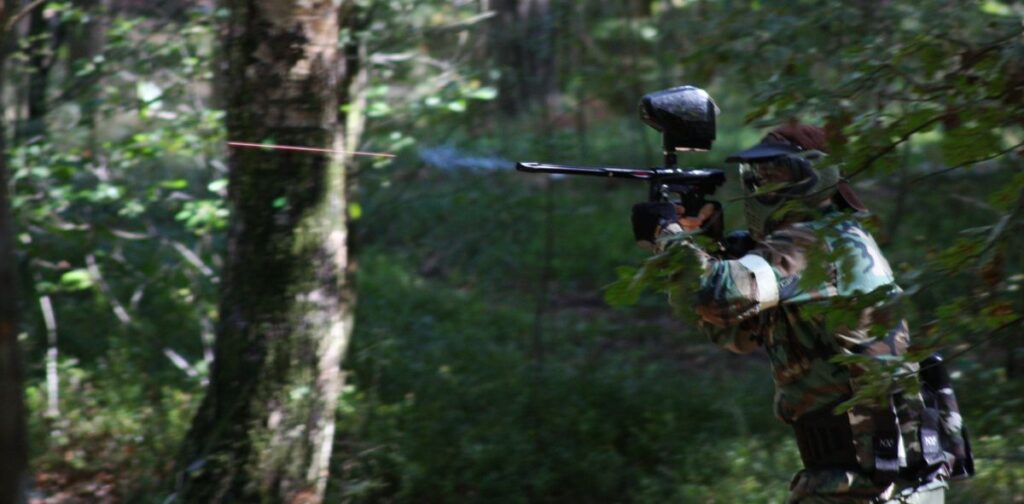
Effective Storage and Maintenance of Equipment
Proper storage and maintenance of your paintball gear are crucial for ensuring its longevity and performance. Once cleaned, store your paintball gear in a cool, dry place away from direct sunlight and extreme temperatures. Excessive heat and moisture can cause damage to the sensitive components of your equipment, such as air systems and accessories.
To maintain your gear in top condition, follow these simple steps:
- Regularly clean all equipment after use to prevent dirt and paint buildup.
- Inspect and replace any worn or damaged parts to avoid malfunctions during gameplay.
- Lubricate moving parts as recommended by the manufacturer to ensure smooth operation.
- Use protective cases for transportation and storage to shield your gear from physical damage.
Remember, diligent care and storage of your paintball equipment not only extends its life but also provides a consistent and reliable gaming experience.
Choosing the Right Upgrades and Accessories
Selecting the right upgrades and accessories for your paintball marker can be as crucial as your playing strategy. Upgrades can enhance performance, accuracy, and comfort, but with so many options, it’s important to prioritize based on your needs and playing style. Here’s a list of common upgrades and accessories:
- ASA’s & Fittings
- Tech Mats
- Marker Cases
- Gun Stands
- Magazines
- Sights & Scopes
- Tactical Accessories
- Chronographs
- Various Brand-Specific Parts & Accessories
When considering upgrades, think about the impact on your gameplay. For instance, sights and scopes can improve your aiming, while tactical accessories may offer better handling and maneuverability. It’s also worth noting that certain brands offer specialized parts and accessories that are compatible with their models, such as Planet Eclipse or Tippmann.
Remember, the goal is to enhance your paintball experience without breaking the bank. Consider the longevity and utility of each item before making a purchase.
Finally, don’t overlook the importance of protective gear. A good mask can make a significant difference in comfort and protection. For those with specific needs, such as a larger fit, there are options available that cater to a big head. Always try on gear when possible to ensure the best fit and comfort for your play sessions.
Selecting the Best Mask for Comfort and Protection
When it comes to paintball, the mask is not just a piece of equipment; it’s your shield, your visibility, and your comfort all rolled into one. Selecting the right mask is crucial for ensuring a safe and enjoyable game. A good mask should provide full head coverage, thermal lenses to prevent fogging and a comfortable fit, especially for those with larger head sizes.
For players with specific needs, such as those looking for masks suitable for bigger heads, options like the Carbon Paintball Carbon OPR Full Head Coverage Thermal Paintball mask are recommended. It’s important to consider the range of protective gear available, from various brands like Empire, Dye, and HK Army, to find the one that fits you best.
Here’s a quick checklist for mask selection:
- Full head coverage for maximum protection
- Thermal lenses to prevent fogging
- Adjustable straps for a snug fit
- Adequate ventilation to ensure breathability
- Compatibility with other protective gear
Remember, a mask that fits well not only protects you but also enhances your overall game experience by allowing you to focus on the game rather than adjusting your gear.
The Social and Competitive Aspects of Paintball
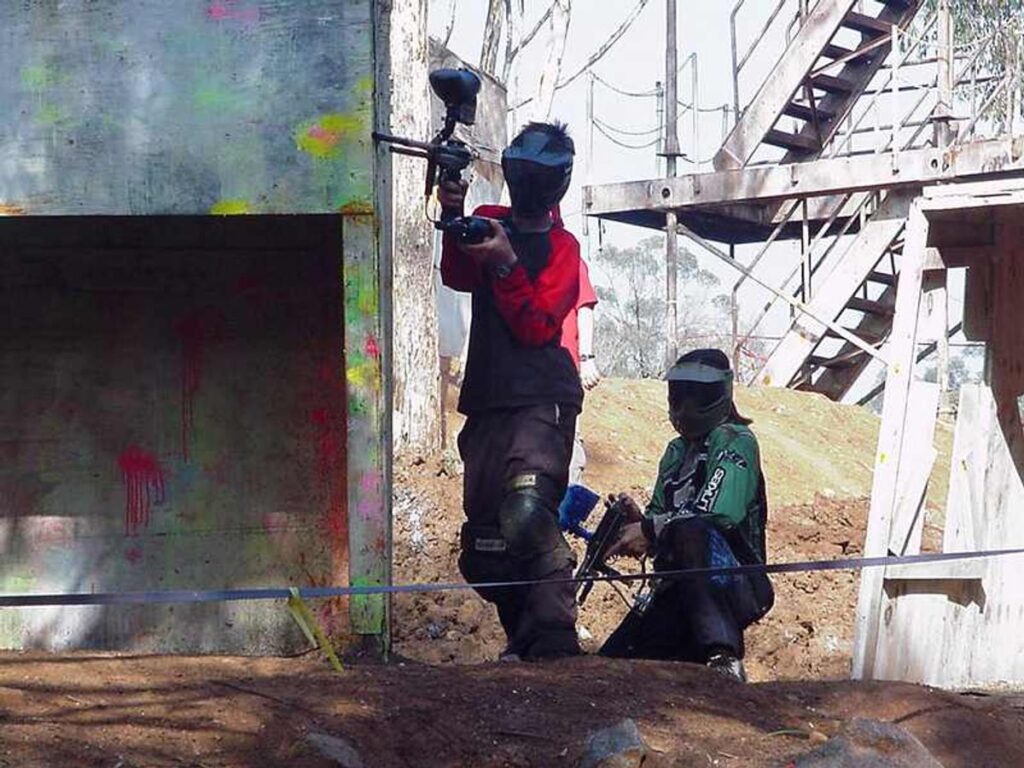
Building Team Chemistry Through Paintball
Paintball offers a dynamic environment for strengthening team bonds and fostering a sense of unity. The shared experience of strategizing and overcoming challenges can significantly enhance trust and cooperation among team members. This is particularly evident in the way teams must communicate and coordinate to outmaneuver the opposition.
- Effective communication is key to success on the paintball field.
- Trust is built as teammates rely on each other for cover and support.
- Shared victories and defeats can strengthen the team’s collective spirit.
Paintballing is not just about the thrill; it’s a platform for teams to test and improve their collaborative skills in a high-energy setting. The intensity of the game compels players to make quick decisions and trust in their teammates’ abilities, which can translate into improved teamwork in professional or social environments.
Navigating the Challenges of Indoor vs. Outdoor Venues
Choosing between indoor and outdoor paintball venues can significantly affect the game’s dynamics and your overall experience. Indoor arenas offer a controlled environment, with games typically lasting 1-3 hours and available all year round. Outdoor fields, on the other hand, provide a natural setting that can introduce variable elements like weather and terrain.
When planning your paintball adventure, consider the following for each venue type:
- Indoor: Compact space, faster-paced games, consistent lighting, and weather protection.
- Outdoor: Expansive areas, diverse landscapes, weather-dependent play, and more strategic gameplay.
Remember, the venue you choose will dictate the pace and style of your game. Indoor venues may require quicker reflexes and a more aggressive approach, while outdoor fields allow for strategic maneuvers and use of the natural environment to your advantage.
Dealing with Disappointments and Negative Experiences
Paintball, like any competitive sport, can sometimes lead to disappointments or negative experiences. It’s essential to approach these situations with a constructive mindset. Whether it’s dealing with rude staff, organizational issues, or feeling misled by promotional materials, the way you respond can greatly affect your overall enjoyment of the sport.
- Reflect on the experience and identify what went wrong.
- Communicate your concerns to the organizers or staff members.
- Consider providing feedback or a review to inform others.
- Use the experience as a learning opportunity to better prepare for future games.
Remember, every challenge is an opportunity to improve and ensure a better experience next time.
If you encounter issues, it’s important to address them promptly and professionally. While it’s natural to feel frustrated, focusing on solutions rather than dwelling on problems can help you move forward and continue to enjoy paintball.
Planning Your Paintball Adventure
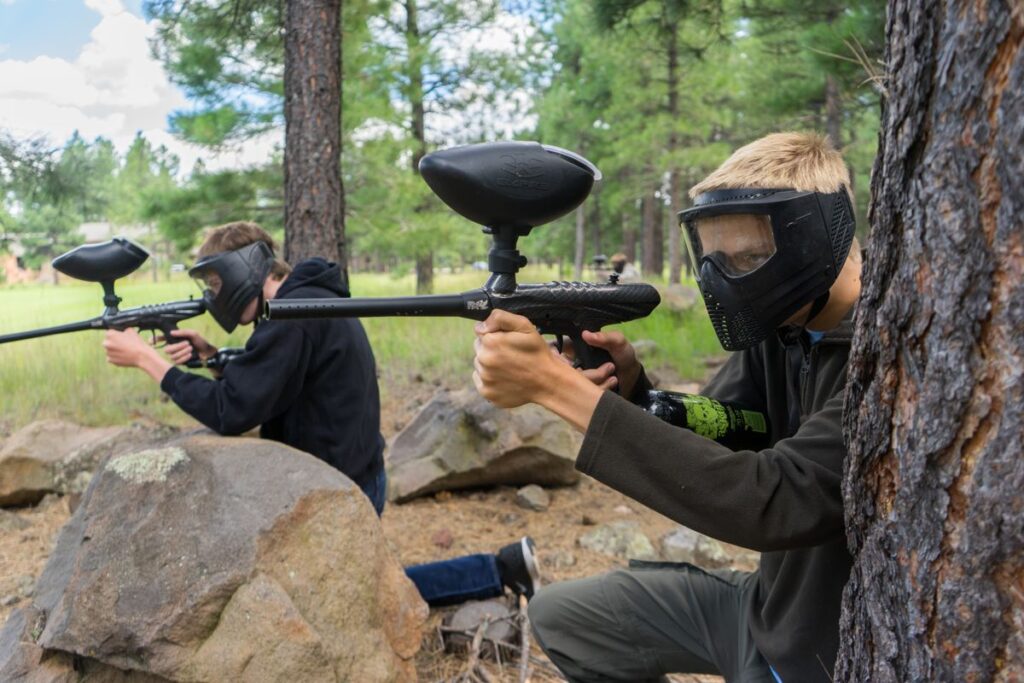
Estimating Game Length and Required Ammunition
Estimating the duration of a paintball game and the amount of ammunition you’ll need is more art than science, but some guidelines can help. The average new player might use 100 paintballs in 2 to 10 minutes, depending on their style of play and the game’s dynamics. If you’re conservative with your shots, you can extend this time, while a more aggressive approach will deplete your stock faster.
- Semi-automatic guns are capped at 10 balls per second, with response triggers at 7 balls per second.
- Guns must shoot at 280 feet per second or less.
Remember, these are just averages and your experience may vary. Factors such as the rate of fire, playing area size, and tactical decisions will all influence how long your paintballs last.
To better plan your game, consider the following table which outlines estimated game length based on different playing styles:
| Playing Style | Estimated Game Length |
|---|---|
| Conservative | 10 minutes |
| Moderate | 5 minutes |
| Aggressive | 2 minutes |
Adjust your ammunition accordingly, and always bring extra to ensure you don’t run out mid-game. It’s better to have a surplus than to find yourself in a tight spot without any paintballs left.
Scheduling and Booking Your Paintball Session
Once you’ve decided to embark on a paintball adventure, scheduling and booking your session is a crucial next step. It’s important to consider the availability of the venue and the size of your group to find a time slot that accommodates everyone’s needs. Paintball venues often offer a range of session times throughout the day, typically starting from early morning to late evening.
To ensure a smooth experience, book your session well in advance, especially if you’re planning for a large group or a special event like a birthday party or a stag do. Early booking can also secure you better rates and availability.
Here’s a quick checklist to help you prepare for booking:
- Determine the preferred date and time for your session.
- Estimate the number of participants.
- Check for any age restrictions or special requirements.
- Inquire about package deals or group discounts.
- Confirm the duration of the session and any additional amenities offered.
Remember, the duration of paintball games can vary, with sessions ranging from 1 to 3 hours. It’s essential to clarify the length of the session to plan your day accordingly and ensure that everyone in your group is aware of the schedule.
Preparing for Different Game Scenarios and Objectives
When preparing for a paintball game, it’s essential to consider the various scenarios and objectives you may encounter. Understanding the dynamics of each scenario is key to a successful strategy. For instance, scenario paintball events can range from historical reenactments to complex mission-based games. Familiarizing yourself with the event’s theme and rules can give you a competitive edge.
To excel in scenario paintball, it’s crucial to adapt to the evolving game conditions and to think on your feet. This means being ready for anything from ambushes to strategic retreats.
Here’s a basic timeline to help you plan your day around a typical scenario event:
- 7:30am – Registration and setup
- 8:30am – Game briefing
- 9:00am to 12:00pm – Morning game session
- 12:00pm to 1:30pm – Lunch break
- 1:45pm to 2:30pm – Afternoon session and final battle
Remember, the actual duration of the game can vary based on many factors, including player style, game dynamics, and the specific rules of the event. Always check with the event organizers for the most accurate schedule.
Frequently Asked Questions About How Long Does a Paintball Game Last?
How long does a typical paintball game last?
The duration of a paintball game can vary widely, but most games last between 15 to 30 minutes. Factors such as game objectives, number of players, and field size can influence the length of the game.
How long will 100 paintballs last?
100 paintballs might last a new player anywhere from 2 to 10 minutes, depending on factors such as rate of fire, playing area size, and playing style. Being conservative with shots can extend their duration.
What’s the difference between cheap and expensive paintballs?
Expensive paintballs are typically higher quality, offering better accuracy, consistency, and less breakage in the barrel. Cheap paintballs may be more prone to breaking prematurely and may provide less accurate shots.
How can I reduce paintball expenses?
To reduce paintball expenses, consider purchasing pre-owned equipment, buying paintballs in bulk, choosing budget-friendly fields, and looking for discounts or package deals.
What should I consider when choosing a paintball mask?
When selecting a paintball mask, consider factors such as comfort, protection, field of vision, anti-fog features, and whether it fits well with any glasses or headgear you might wear.
How can paintball help with team building?
Paintball encourages teamwork, communication, and strategy, making it an effective team-building activity. It can help build trust and camaraderie among players while providing a fun and competitive environment.
Conclusion
In conclusion, the duration of a paintball game can vary widely, influenced by factors such as the number of paintballs a player has, the rate of fire, the size of the playing area, and individual playing styles.
While 100 paintballs might last a new player anywhere from 2 to 10 minutes, strategic conservation of ammo can extend playtime. Paintball remains an accessible sport compared to other hobbies, with ways to manage costs effectively.
Whether you’re engaging in indoor paintball for a few hours or planning multiple games, understanding these variables will help you maximize your experience and manage expectations for both time and budget.

